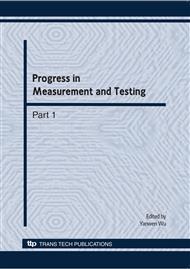p.129
p.135
p.141
p.145
p.151
p.156
p.162
p.168
p.172
The Application of Improved GM(1,1) in Power Load Forecasting
Abstract:
The forecasting precision of GM(1,1) is very low, when the data sequence is not smooth. The logarithm smoothing is used for the original data sequence. Considering the low precision caused by overlarge and forecasting gray interval for gray modeling, A novel method is proposed for power load forecasting: weighted forecasting method of gray related degree with revised parameter and logarithm smoothing. The method can make various factors weaken or counteracted and prevent the forecasting data from too fast increasing. The proposed model is demonstrated by a test in a certain area. The result shows that the method is effective both in theory and in practice.
Info:
Periodical:
Pages:
151-155
Citation:
Online since:
May 2010
Authors:
Price:
Сopyright:
© 2010 Trans Tech Publications Ltd. All Rights Reserved
Share:
Citation:


